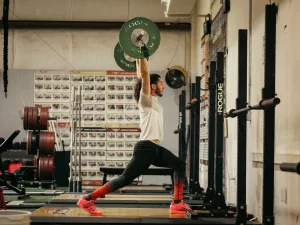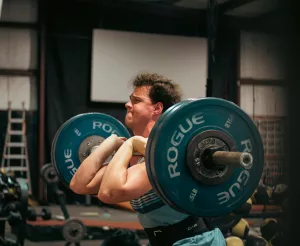Are you concerned if heavy lifting good for pitchers?
Baseball players, especially pitchers, must possess both strength and accuracy to succeed. Even though a variety of training techniques have been created to increase a pitcher's power and effectiveness, heavy lifting is still a contentious subject. Some claim that lifting heavy weights can increase a person's strength and muscle mass, which in turn can improve a pitcher's capacity to throw harder and quicker. Others, however, contend that strenuous lifting can put an excessive amount of strain on a pitcher's joints and muscles, possibly resulting in damage and poor performance. In this article, we'll examine the controversy regarding heavy lifting for pitchers and look at both its potential advantages and disadvantages. In order to provide a thorough analysis of whether heavy lifting is actually beneficial for pitchers, we will also review recent studies and expert opinions on the subject.
Benefits of Heavy Lifting for Pitchers
 Incorporating heavy lifting into a pitcher's conditioning program may have a number of advantages. Strength gain is one of the most apparent advantages as it can enhance pitching velocity and endurance. Pitchers who raise heavy weights can develop muscle mass in vital areas like the shoulders, back, and legs, all of which are crucial for producing power and torque during the throwing action.
Incorporating heavy lifting into a pitcher's conditioning program may have a number of advantages. Strength gain is one of the most apparent advantages as it can enhance pitching velocity and endurance. Pitchers who raise heavy weights can develop muscle mass in vital areas like the shoulders, back, and legs, all of which are crucial for producing power and torque during the throwing action.
Heavy lifting can enhance a pitcher’s overall body mechanics and form in addition to helping him acquire strength. Many lifts, such as squats, cleans, and deadlifts, require proper alignment and technique in order to be done safely and effectively. Because of the close correlations between many of the lifts, pitchers can improve their body awareness and control, which by mastering these lifts will help them pitch with improved mechanics.
The prevention of injuries is a possible advantage of heavy lifting. Pitchers can lower their risk of damage from the high-impact nature of pitching by strengthening their muscles and joints to allow the body to handle the force produced by the increase in power output. Younger pitchers, whose bodies may still be growing and thus more prone to injury, should pay particular attention to this. Ensuring the back
Overall, heavy lifting can be a beneficial addition to a pitcher’s training program when done properly and moderately, offering a number of advantages for improved performance and injury prevention. To guarantee correct form and technique, it’s crucial to approach heavy lifting with caution and to work with a qualified trainer or coach. We highly recommend you start this education along with the best strength and conditioning program with the 3X Pitching Velocity Program.
Risks and Potential Drawbacks of Heavy Lifting for Pitchers
 While heavy lifting may have many advantages for pitchers, there are also some risks and possible disadvantages that should be taken into account. Injury danger is one of the main issues with heavy lifting. The joints, muscles, and tendons can experience significant stress from lifting hefty weights, which can result in strains, sprains, and other injuries. This is particularly true if a pitcher hasn't warmed up correctly or is lifting too much weight too quickly.
While heavy lifting may have many advantages for pitchers, there are also some risks and possible disadvantages that should be taken into account. Injury danger is one of the main issues with heavy lifting. The joints, muscles, and tendons can experience significant stress from lifting hefty weights, which can result in strains, sprains, and other injuries. This is particularly true if a pitcher hasn't warmed up correctly or is lifting too much weight too quickly.
Loss of flexibility and mobility is another possible side effect of heavy lifting. While lifting heavy weights can increase muscle mass and power, it can also make the muscles tighter and less supple if not performed through a full range of motion and with a mobility training program. For pitchers, who need a high level of flexibility and mobility in order to execute their pitches with precision and accuracy, this can be especially problematic if lifting is not used properly.
Lastly, not all pitchers should engage in heavy lifting. Younger pitchers, for instance, may not be physically prepared to manage the stress and strain of heavy lifting. Similar to this, older pitchers or those who have a history of injuries may need to exercise care when doing heavy lifting to prevent aggravating pre-existing conditions. It is highly recommended that young athletes learn the techniques of lifting so they can start heavy lifting earlier in their careers. They can start this education and training with the 3X Pitching Beginner Program.
Overall, while adding heavy lifting to a pitcher's training regimen can be beneficial, it is essential to proceed with caution and be aware of any potential risks and disadvantages. For the purpose of minimizing risks of harm and maximizing the advantages of heavy lifting, working with a qualified trainer or program is essential.
Best Practices and Guidelines for Heavy Lifting in Pitching Training
 TThe 3X Pitching Velocity Program is a well-known training regimen that helps pitchers increase their velocity and efficiency through heavy lifting and other exercises. Although many pitchers have found the program to be beneficial, it is still essential to proceed with caution and adhere to best practices and guidelines to minimize risks and maximize benefits.
TThe 3X Pitching Velocity Program is a well-known training regimen that helps pitchers increase their velocity and efficiency through heavy lifting and other exercises. Although many pitchers have found the program to be beneficial, it is still essential to proceed with caution and adhere to best practices and guidelines to minimize risks and maximize benefits.
Progressive overload is one of the core tenets of the 3X Pitching Velocity Program. This entails building up the weight and intensity of the lifts gradually over time as opposed to starting out too fast with heavy lifting. This lowers the risk of injury while assisting the body in adjusting to the strain of lifting.
For heavy lifts, proper form and skill are imperative. In the 3X Pitching Velocity Program, pitchers learn how to perform exercises like squats, cleans, deadlifts, and bench presses with correct alignment and technique. This ensures that the lifts are being done in a way that optimizes their benefits while also helping to prevent injury.
The 3X Pitching Velocity Program’s use of functional workouts is another crucial component. These include rotational exercises and other explosive jumps that imitate the movements and demands of pitching. By incorporating these exercises into the training program, pitchers can improve their strength and power in a manner that immediately translates to improved performance on the mound.
Finally, it’s critical to incorporate recovery and leisure days into any program that involves heavy lifting. The 3X Pitching Velocity Program advises giving your body at least two day’s a week off from heavy lifting so it can rest and repair muscular tissue. Additionally, healthy eating and drinking habits are crucial for promoting muscular development and recovery.
Pitchers can safely and effectively integrate heavy lifting into their training routine by adhering to best practices and guidelines, which may improve performance and lower the risk of injury.




